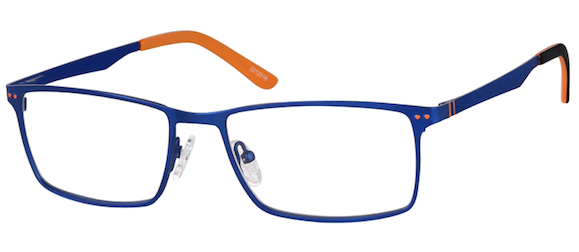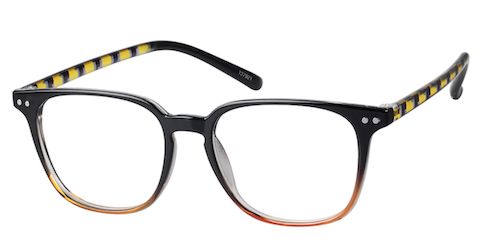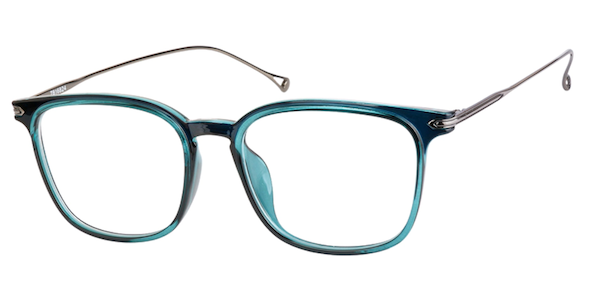Nasal Prosthetic Restoration after rhinectomy (surgical removal of the nose)
Considerations after Rhinectomy
The central feature of the human face, our nose acts as a visual anchor for surrounding facial features, creates our unique profile, filters and warms the air we breathe, protects our sinuses, and guides our sense of smell and taste. Traumatic injuries and birth differences may affect the appearance of nasal anatomy, and in some cases a rhinectomy - surgical removal of the nose - is necessary to treat cancer or other illnesses. For patients who are missing all or part of the nose, a silicone nasal prosthesis can restore the nasal shape and profile, support eyeglasses, and protect the underlying anatomy while keeping the nasal cavity moist. A prosthetic nose is an option when surgical reconstruction is not possible or is delayed to allow for ongoing monitoring of the nasal cavity for recurrence of disease. A nasal prosthesis can be a long-term treatment option or an interim or temporary option, depending on what is needed. Some nasal defects extend onto the cheek, forehead, upper lip region or may extend into the mouth requiring a more extensive prosthesis. For patients with complex nasal defects, we use our clinical expertise and collaborative partnership with dental specialists (maxillofacial prosthodontists) to create effective prosthetic solutions.
For most of our patients, removal of the nose results in an open cavity that exposes the underlying structures such as mucosa (the lining of the mouth and nose) and sinuses. Although we are not usually able to see these internal parts of the face, it may be reassuring to know that this is normal anatomy. It is, however, a good idea to protect the nasal opening from introduction of germs either with a clean bandage or prosthesis. It can be challenging to effectively bandage the affected area after rhinectomy because of facial movement, proximity to the eyes, skin sensitivity, and moisture from the nasal opening. We are available to troubleshoot bandaging strategies with patients while they await fabrication of a prosthesis or surgical reconstruction.
Many patients describe disruptions to nasal function related to absent anatomy and treatment side effects, including things like changes to sense of taste and smell, dryness, and congestion. There may be therapies or treatments that can alleviate or lessen some of these symptoms, so please do not hesitate to contact your physician with your questions or concerns.
Prosthetic Restoration of the Nose
After surgical removal of the nose, healing time is required before we can begin the process of making the prosthesis. Healing time varies, and may be prolonged if the patient is also undergoing radiation therapy or other treatments. In some cases, an interim or temporary prosthesis can be provided during radiation. A prosthesis that is worn during radiation might attach to eyeglasses so that the patient can place and remove it easily without stressing fragile irradiated skin. This eliminates the need for a bandage and may help the patient feel more comfortable while going through treatment. Once the nasal area has healed completely and swelling has diminished, the final prosthesis can be fabricated.
Every nasal prosthesis is custom-made from a soft silicone to intimately fit the patient’s nasal opening. Photographs of the patient, along with our artistic expertise and knowledge of craniofacial anatomy, help us recreate a shape that closely resembles the patient’s nose before surgery. Unique color formulae are developed for each patient to closely match their individual complexion and skin details. The prosthesis is designed to stay in place securely and comfortably based on the needs of the patient. Please visit our Nasal Prosthesis page to learn about nasal prosthetic attachment options, including anatomical, mechanical, adhesive, or craniofacial implant retention.
Our process:
Initial consultation - We start by meeting with the patient to evaluate the nasal area, discuss prosthetic treatment options, and share examples of similar patient cases. We also answer questions and inquire about the patient’s diagnosis, medical history, and specific needs and concerns. When a rhinectomy is scheduled, it is helpful for us to meet with the patient beforehand to document the nasal shape with photos and/or an impression, and to ease their concerns as much as possible by sharing information about what to expect. After the initial consultation, we communicate with the surgeon regarding the patient’s treatment plan.
Moulage - A gentle impression is taken of the nasal area. This is a quick and painless process, typically about 20 minutes from start-to-finish.
Sculpting and color - A wax prototype of the nasal shape is tried on the patient to determine optimal positioning, size, shape, and fit. This is a collaborative process, with feedback from the patient (and often family members) to help us recreate the nasal shape and profile. Pigment is mixed into silicone to match the patient’s skin - usually 6-8 different colors that will be used to cast the prosthesis.
Coloring and delivery - Fit is verified with the final silicone prothesis. External coloring is applied to help the prosthesis blend into the surrounding skin. Individually tailored wear and care instructions are demonstrated to help the patient wear the prosthesis with comfort and ease.
You can find additional photos of prosthetic noses in the Nasal Prosthesis Gallery and in our Nasal Prosthesis Reference Guide PDF.
Tips for Success
Photos of the patient taken during the years prior to surgical removal of the nose are important references for us as we sculpt the missing nasal anatomy. Clear, close-up photos of the nose from different angles are especially useful. If a patient’s family member has a similar nasal shape, we might take photos or an impression for reference if they are willing to help.
Although a silicone prosthesis is typically removed each night, some patients find it more comfortable to sleep with their nasal prosthesis in place as it can prevent dryness in the nasal cavity. If the prosthesis is worn for sleeping, in most cases it should still be removed daily to clean the prosthesis and the underlying skin.
The typical lifespan of a nasal prosthesis is 1-3 years. It is especially important that patients who wear a nasal prosthesis return for annual follow up appointments. This allows us to inspect the prosthesis for signs of wear or damage that might necessitate replacement, clean it thoroughly, do any needed repairs and touch up the color to extend its useful life. Maintaining a clean and hygienic silicone surface is critical since patients breathe through the prosthesis.
We recommend that all patients who wear a nasal prosthesis also wear eyeglasses, even if no prescription is needed. Eyeglasses help to keep the prosthetic nose in place securely and disguise the edges of the prosthesis where they meet the skin. Lightweight frames with a bit of color and an interesting shape like the examples below are a great distraction from the prosthesis. Some of our patient have found very affordable and stylish glasses from websites like Zenni Optical.
If you are in need of a nasal prosthesis, please let us know how we can help. We are here to answer your questions and help you through the process.





